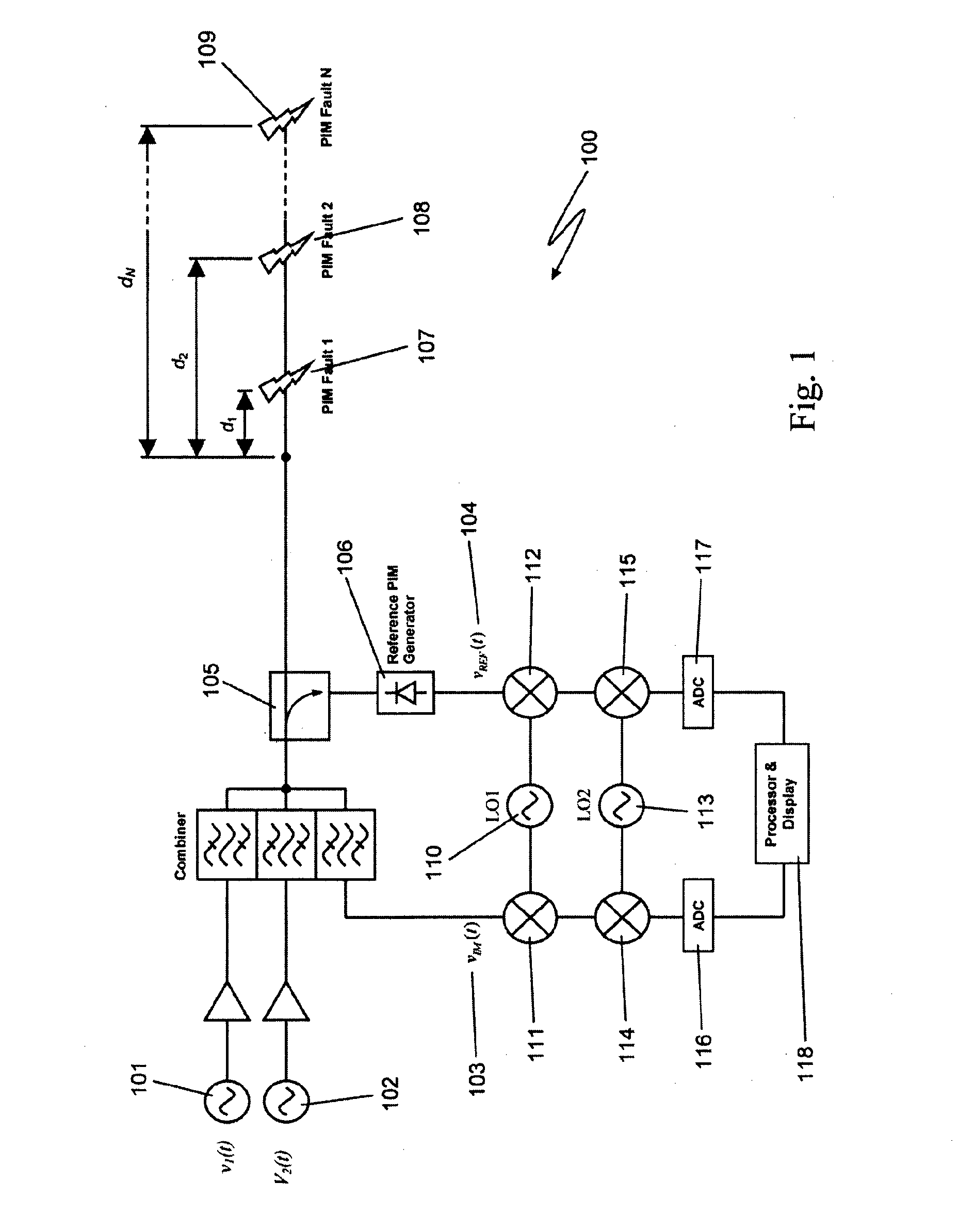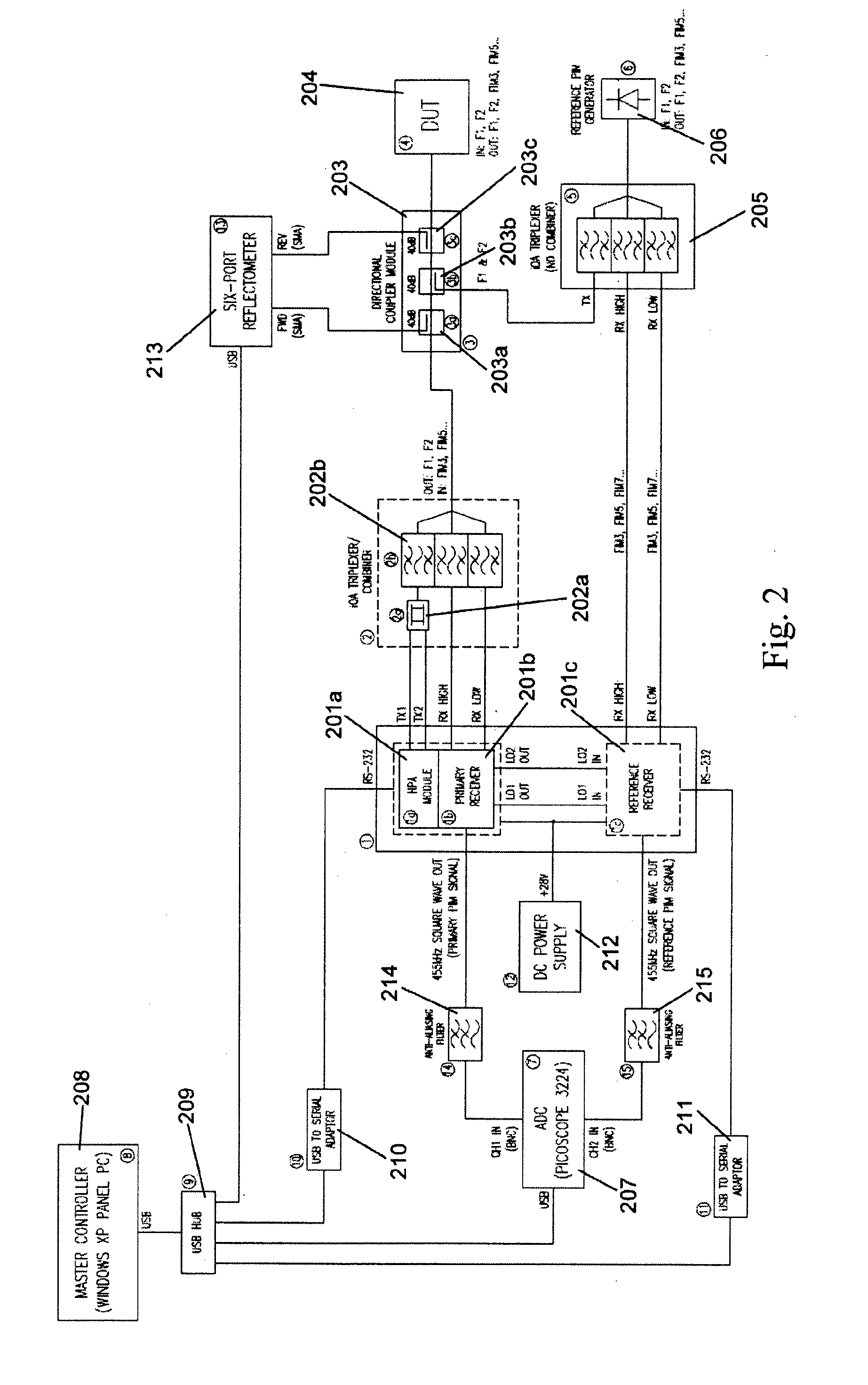Method and apparatus for locating faults in communications networks
- Summary
- Abstract
- Description
- Claims
- Application Information
AI Technical Summary
Benefits of technology
Problems solved by technology
Method used
Image
Examples
Embodiment Construction
[0092]With reference to FIG. 1 there is illustrated a simplified block diagram of the test apparatus 100 according to one embodiment of the present invention. As shown a pair of high-power, frequency-synthesised, unmodulated RF carriers v1(t) 101 and v2(t) 102 are generated inside the HPA module of the apparatus. The power and frequency of v1(t) 101 and v2(t) 102 can be independently set to a range of values. v1(t), v2(t) are combined inside the instrument and then applied to the input of the device under test (DUT).
[0093]vIM(t) 103 is the primary PIM signal. It is the vector sum of all the PIM signals 107, 108, 109 generated in the DUT. It usually has a very low power level (typically much less than −80 dBm). A reference tone vREF (r) 104 is generated inside the apparatus 100. It has the same frequency as the primary PIM signal 103 and is derived by taking a sample of the two high-power carriers v1(t) 101, v2(t) 102 via a directional coupler 105 and applying them to a double balanc...
PUM
 Login to View More
Login to View More Abstract
Description
Claims
Application Information
 Login to View More
Login to View More - R&D
- Intellectual Property
- Life Sciences
- Materials
- Tech Scout
- Unparalleled Data Quality
- Higher Quality Content
- 60% Fewer Hallucinations
Browse by: Latest US Patents, China's latest patents, Technical Efficacy Thesaurus, Application Domain, Technology Topic, Popular Technical Reports.
© 2025 PatSnap. All rights reserved.Legal|Privacy policy|Modern Slavery Act Transparency Statement|Sitemap|About US| Contact US: help@patsnap.com



